This aerial photo clearly shows the sharp contrast between the sefers (bottom) and the government housing projects. (top left) .
© Brook Teklehaimanot Haileselassie
Text Peer Peer
Addis Ababa, the capital of Ethiopia, is rapidly evolving. Many neighbourhoods were constructed by residents with little professional aid: the so-called ‘sefers’. Meanwhile, the government invests in large-scale housing projects, which often uproots and disrupts sefer communities. Brook Teklehaimanot Haileselassie investigated the culture of ‘home’ in both neighbourhood types during his PhD.
“My uncle is an architect,” is how Brook starts our conversation. “I got my first impressions of architecture by watching him draw.” Brook grew up in Addis Ababa, where “many houses, especially the expensive ones, are fenced off. It sparked my curiosity: what’s behind those fences?” He would sometimes get a peek through an opened gate. Based on these glimpses and his own imagination, he drew possible interiors and exteriors of many homes. After finishing his studies, Brook started three simultaneous careers: teaching, working for his uncle, and personal projects. Brook founded his own firm in 2015, the same year he travelled to Delft to teach for six months at the Faculty of Architecture and the Built Environment (A+BE). “I previously met A+BE researchers at conferences. Dick van Gameren is connected to Addis Ababa University, where he gave lectures and created networks with the academic community.” The NWO-funded project ‘Addis Ababa Living Lab’ gave Brook the opportunity to pursue his PhD at A+BE.
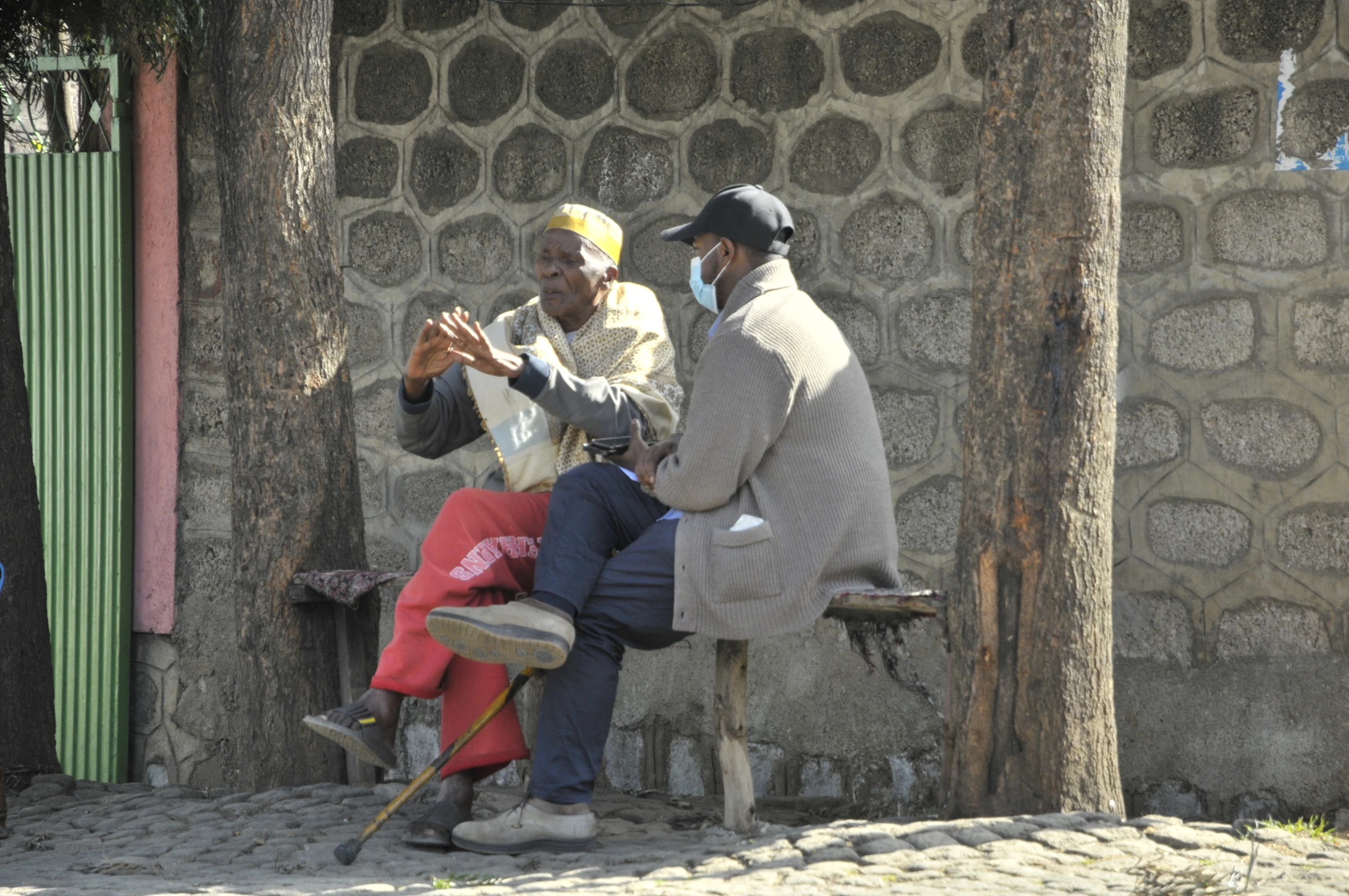
Brooks interlocutor interviewing a resident seated on a self-built bench at the entrance of his house.
© Brook Teklehaimanot Haileselassie
‘Residents were scared and suspicious due to the war and the government’s disruptive housing projects’
Addis Ababa Living Lab
Amongst the range of objectives within the project, the primary one is to improve the livelihood of Addis Ababa’s urban dwellers using transdisciplinary approaches of analysis, planning, and design. A direct collaboration bridges research in both the Netherlands and Ethiopia. Participants are TU Delft, the Ethiopian Institute of Architecture, Building Construction and City Development (EiABC), governmental agencies, international design practices and non-profit organisations. The project stems from a call by research funder NWO for proposals focused on global sustainable development.
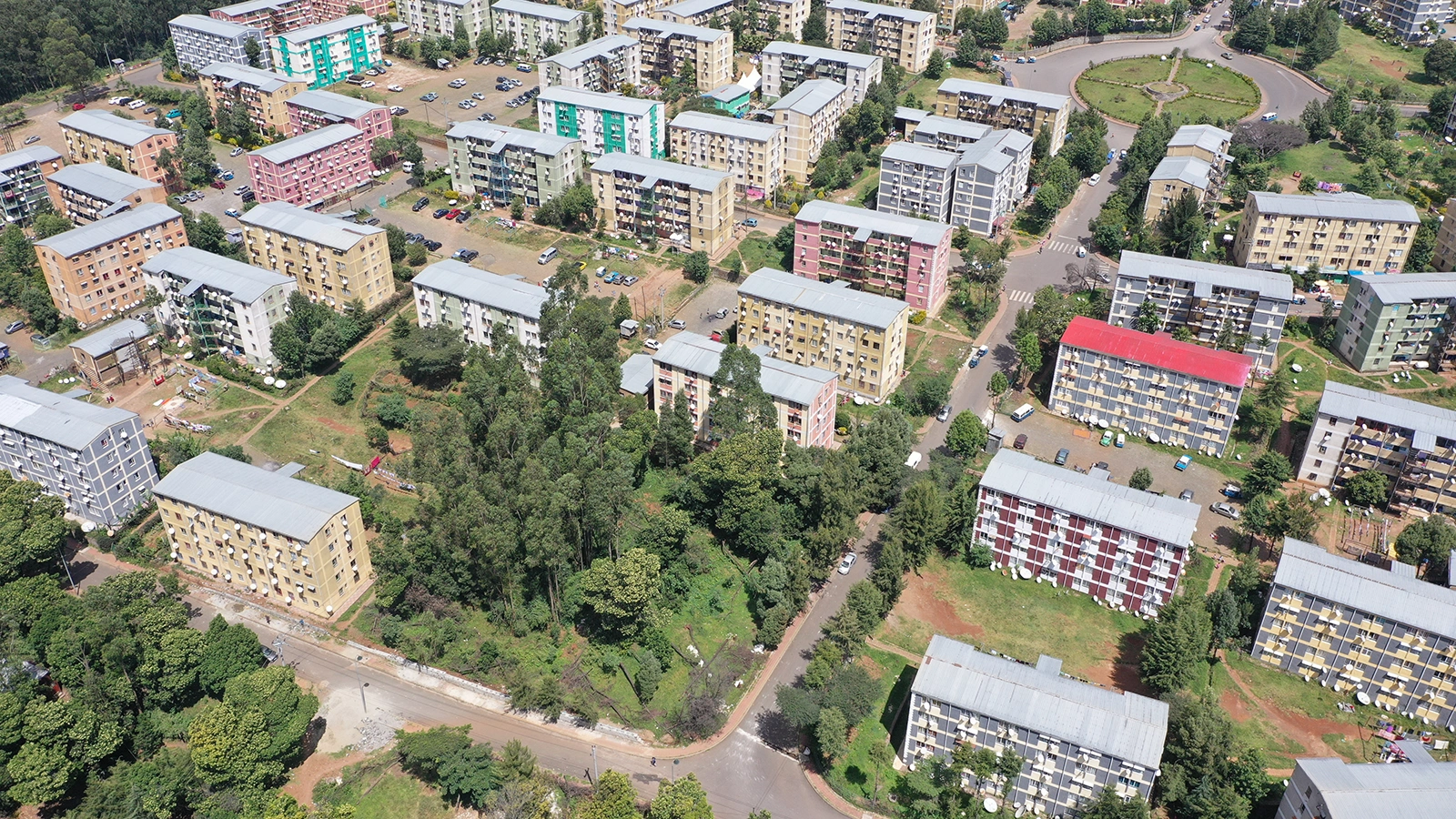
Government quarters often lack the cultural patterns of sefers.
© Brook Teklehaimanot Haileselassie
Personal stories
Brook aimed to study housing in Addis Ababa, in both the sefers and government projects, in order to gain insight into how residents use their spaces and how this use changed over time. He employed Architectural Ethnography: simply put, in-depth interviews conducted while people are employed in their day-to-day activities. “We asked residents to invite us into their most private spaces and share their stories. Not just of their homes, but also their personal experiences over the past 10 or 20 years. It requires a lot of trust on their end.”
Still, Brook and his team managed to interview 22 households. “After only a year, we were hit by the double catastrophe of COVID-19 and the Ethiopian civil war. People with Tigrayan roots were being profiled and persecuted back home: I lost friends and family members. I could not go back there, which was a very painful discovery.” Brook resolved to ask friends and colleagues back home to conduct many of the interviews. “A difficult process: residents were scared and suspicious due to the war and the government’s disruptive housing projects. It took a lot of effort to gain their trust.”
Three aspects of ‘home’
Among Brook’s most important results are definitions and descriptions of three ‘aspects of home’ in Addis Ababa. Highly simplified, these are: “Gibi, meaning ‘territory’ or ‘compound’. What the resident sees as his or her property, both inside and outside the house, and uses during daily activities such as cooking or socialising. Gwada, the most private space of the house. Not shown to outsiders, usually the kitchen or bedroom. And Gwaro, a private ‘backyard’. A discrete outdoor area where the family stores or hides items, which is possible in Addis Ababa’s favourable climate.”
These aspects of home are well-defined in the sefers of Addis Ababa. “I was often surprised by the degree of personalisation and adaptation of the houses. Locals with the necessary skills gather to modify homes without professional assistance.” The government-built neighbourhoods often lack these cultural patterns, but residents find workarounds. “They hang up curtains or plant vegetables indoors to define spaces. It demonstrates the importance of these patterns for residents of the city.”
Sefers
Residents in Addis Ababa often designate the neighbourhood they come from by their sefer or their iddir. By sefer is not meant the neighbourhood whose boundaries the government has set, but the social group you belong to and the place where residents feel at home. An iddr is a kind of neighbourhood association that offers help in many ways. This self-organised social safety net is extremely important especially in poor neighbourhoods. Labelling neighbourhoods as slums paves the way for demolition and replacement but that also means destruction of social structures. And thus the soul of this kind of neighbourhood is lost, argued researcher Anteneh Tola (A+BE) in his 2023 thesis. “If urban planning proceeds exclusively according to formal boundaries and ignores these kinds of “cognitive” boundaries, you lose what makes a neighbourhood,”he said. “People quite want better houses, but they don’t want to lose what binds them together.”
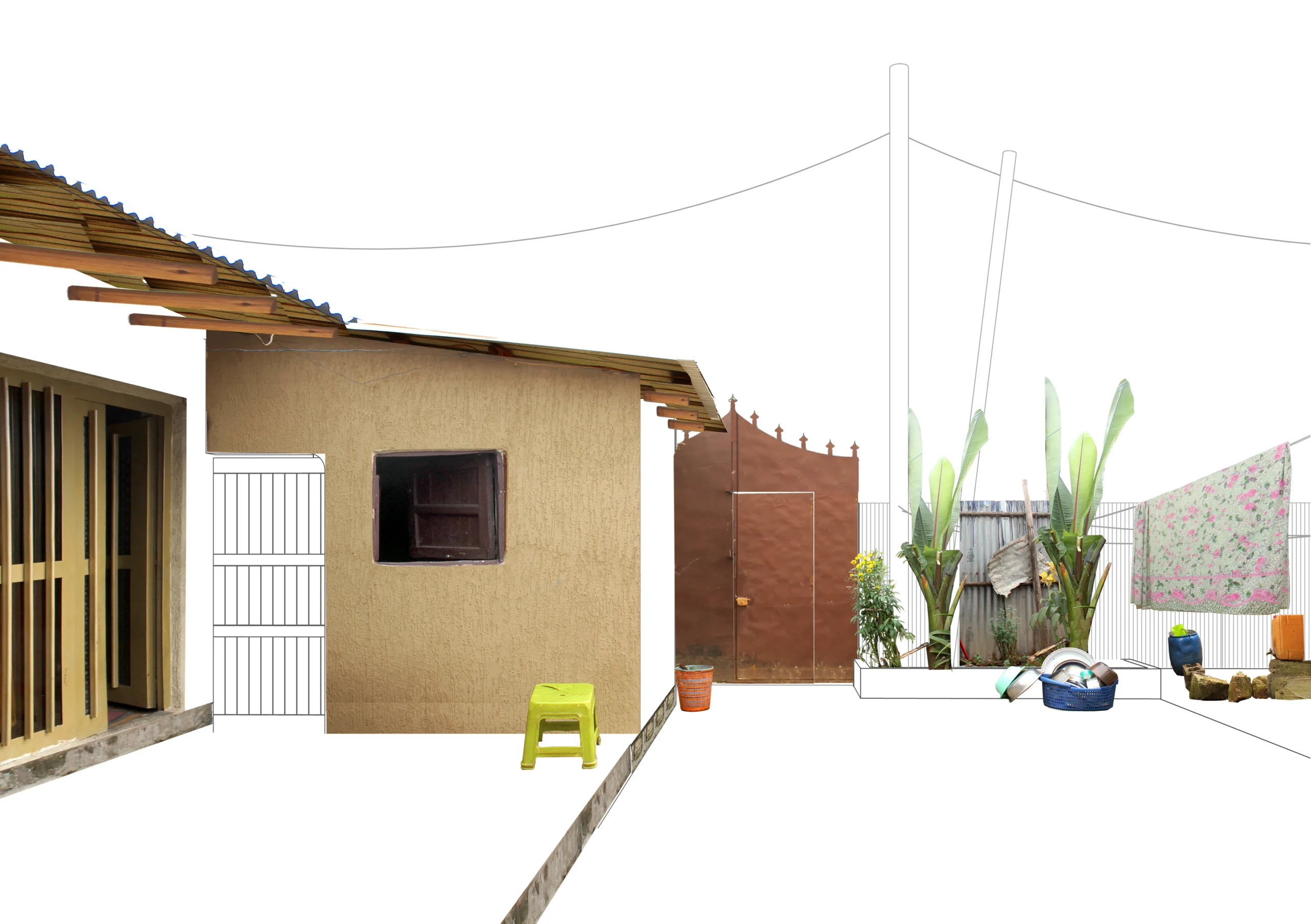
Pictures of various spaces in and around homes were transformed into collages to highlight essential elements, in this case of a Gibi in one of the planned settlements.
© Brook Teklehaimanot Haileselassie
Apart from his dissertation titled Reconstructing Dwelling: Social and spatial features of housing practices in Addis Ababa, Brook has written a book for a non-academic audience with the same title. “It’s crucial that my findings are accessible for practitioners and the general public,” he says.
Reconstructing Dwelling: Social and spatial features of housing practices in Addis Ababa | Brook Teklehaimanot Haileselassie | TU Delft paperback | ISBN 9789463847377.
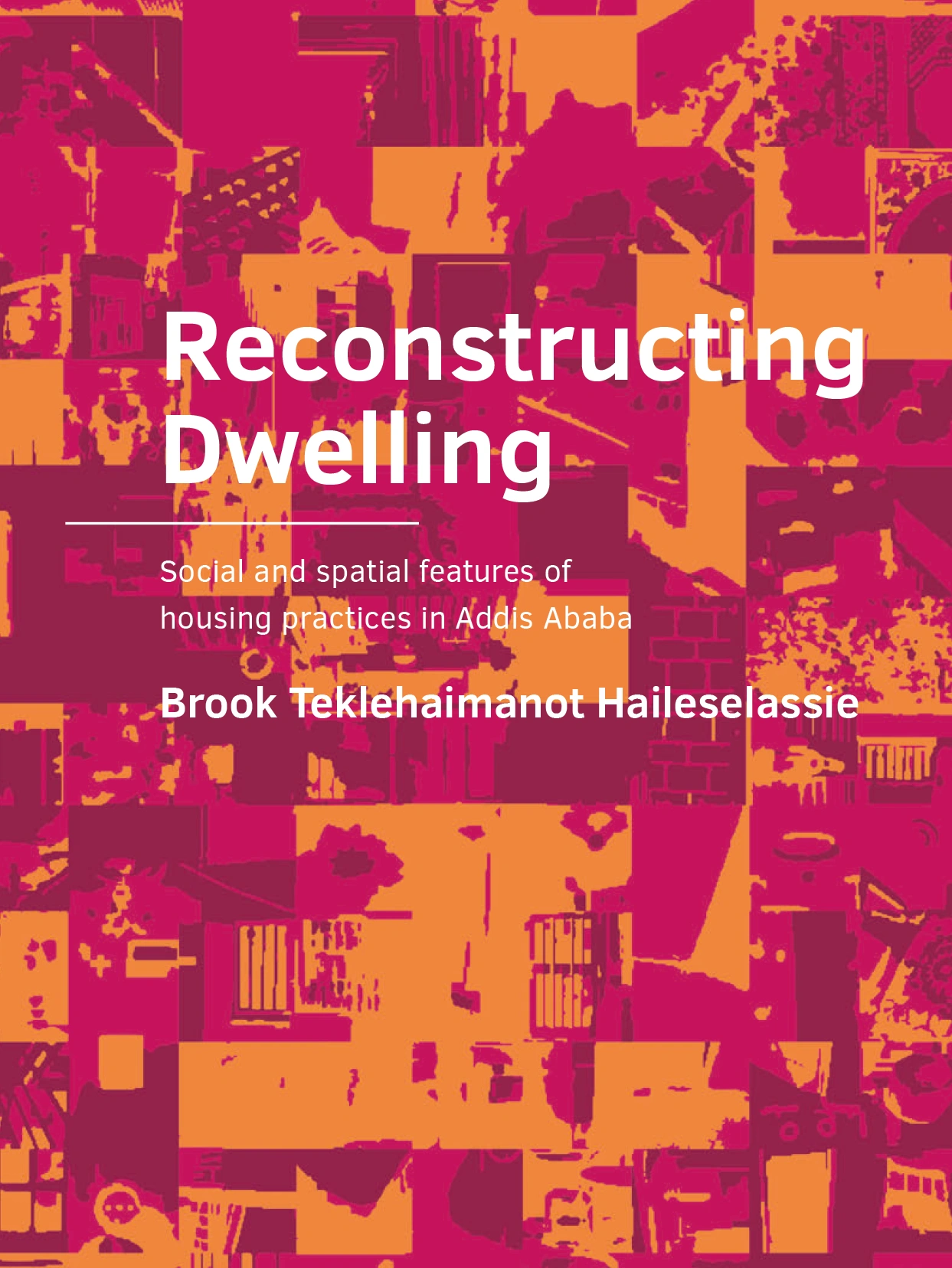
Film
As part of the Addis Ababa Living Lab research project, the short film When I Came to Your Door was made. It premiered at the International Film Festival Rotterdam in January and won the Best Short Film Award at the Venice Architecture Film Festival. The film follows a woman searching for her partner among the ruins of a neighbourhood in Addis Ababa. She is propelled by forced evictions in the city’s informal communities. The film is inspired by a love letter found on the spot. When I Came to Your Door captures real footage of one of the most recent demolitions driving out low-income communities to make way for large-scale urban projects.
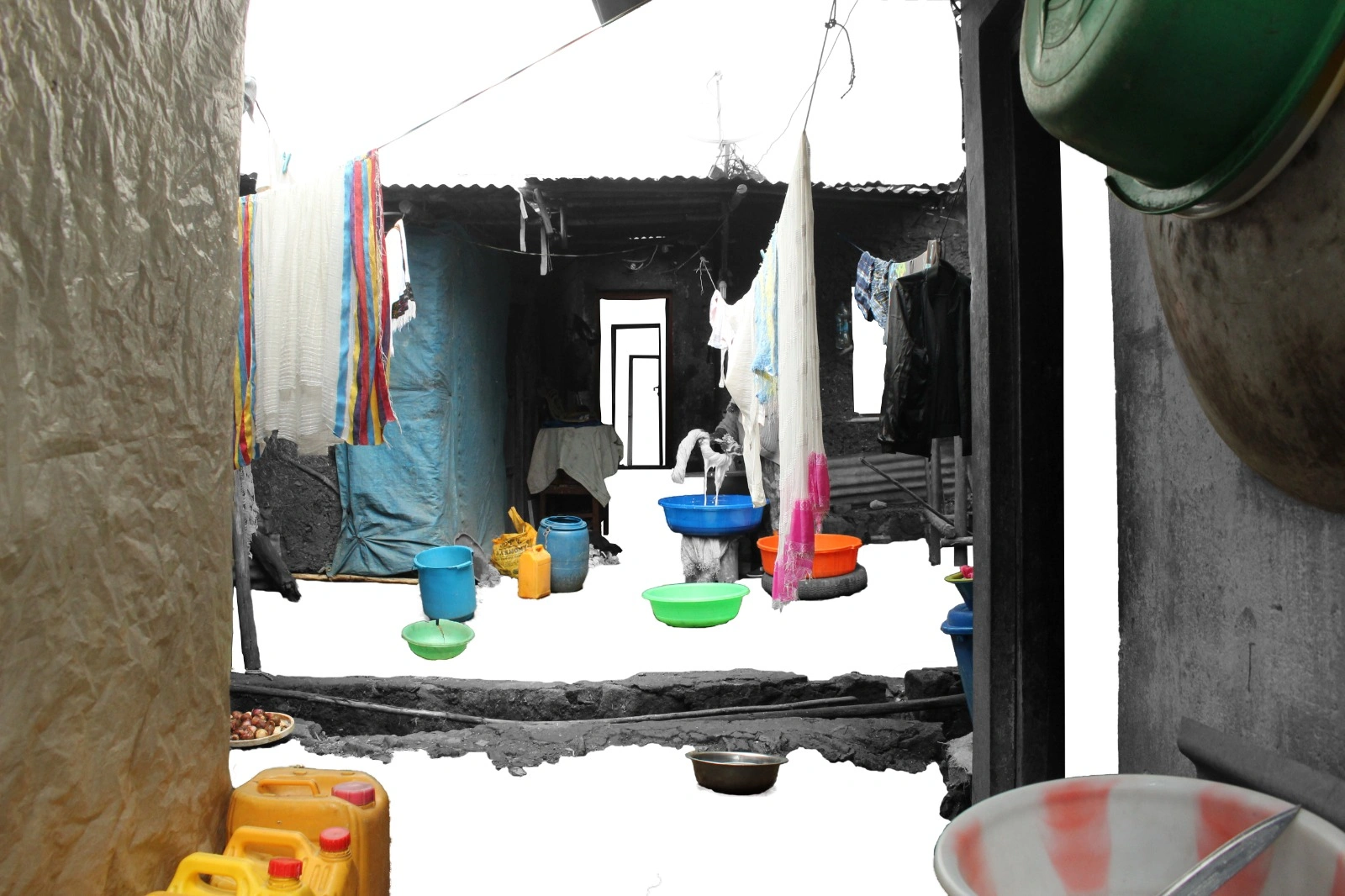
Gibi is what the resident sees as his or her property, both inside and outside the home, and what he or she uses during daily activities such as cooking or socializing.
© Brook Teklehaimanot Haileselassie
